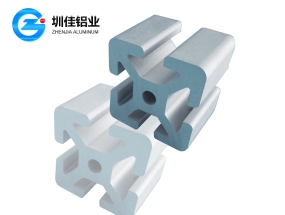 A: Physical and chemical properties.
A: Physical and chemical properties.
1) Density. After cold deformation, due to defects such as micro-cracks or macro-cracks and cracks in the grains and crystals, the density of the aluminum material decreases.
2) Resistance. The destruction of the intergranular material causes direct contact of the crystal grains, ordering of the crystal grains, intergranular and intragranular cracking, and so on, all having a significant influence on the resistance change. The first two reduce the resistance as the degree of deformation increases, and the latter reverses.
3) Chemical stability. After cold deformation, the internal energy of the material can be increased, making its chemical properties more unstable and easily corroded, in particular, it is prone to stress corrosion.
B: Mechanical properties.
After cold deformation of aluminum, due to intragranular and intercrystalline damage, the crystal lattice has been distorted and the second type of residual stress has occurred, causing a sharp decline in the plasticity index, and may be close to a completely brittle state in the limit state. On the other hand, due to lattice distortions, increased dislocations, elongated grains, and substructures, their strength indexes are greatly improved, ie, work hardening occurs.
C: Structure and Anisotropy
After a large cold deformation of the aluminum material, the material exhibits anisotropy due to the texture. For example, aluminum alloy thin plates tend to show noticeable ears during deep drawing. The processing conditions should be reasonably controlled to take full advantage of the favorable deformation of the texture and anisotropy, and the effect of cold deformation on the performance of the aluminum material to avoid or eliminate its disadvantageous aspects.
The quality of heat treatment of industrial aluminum extrusion die directly affects the service life of the extrusion die. The die is quenched and tempered several times to reach the required hardness. Quenching is to increase the hardness of the mold, and tempering is used to improve the toughness of the mold and stabilize the internal structure. Industrial aluminum extrusion dies must pay special attention to the following points during heat treatment:
1, the high temperature section heating rate faster, the holding time can not be too long to prevent the extrusion mold has been burned or overheated, overheating - grain coarse, over-burning - low melting point elements and inclusions dissolved;
2, aluminum extrusion mold after quenching and timely tempering to prevent cracking;
3. When the hardness of the extrusion die is found to be insufficient after the heat treatment or the hardness is not uniform, it should be annealed and re-heated according to the process (When the hardness value
4. For a large aluminum extrusion die or a complex finished die, add a stress relief and tempering step (eliminate electrical machining and machining stress, ie, eliminate thermal stress and tissue stress);
5, mold quenching oil temperature should be controlled at 100 °C to ensure the quenching effect.


 A: Physical and chemical properties.
A: Physical and chemical properties.